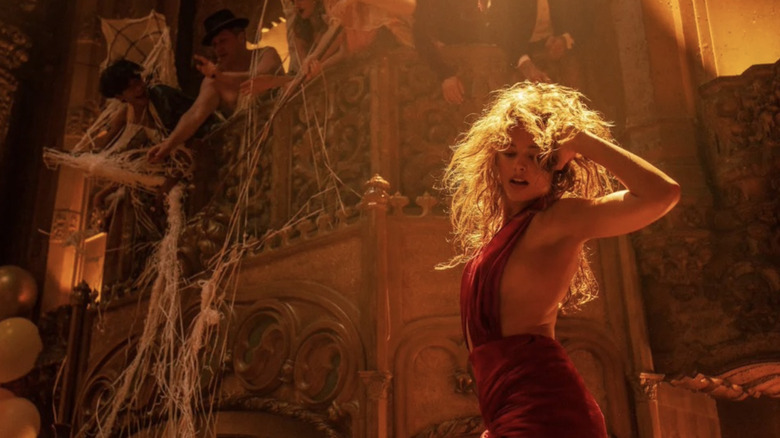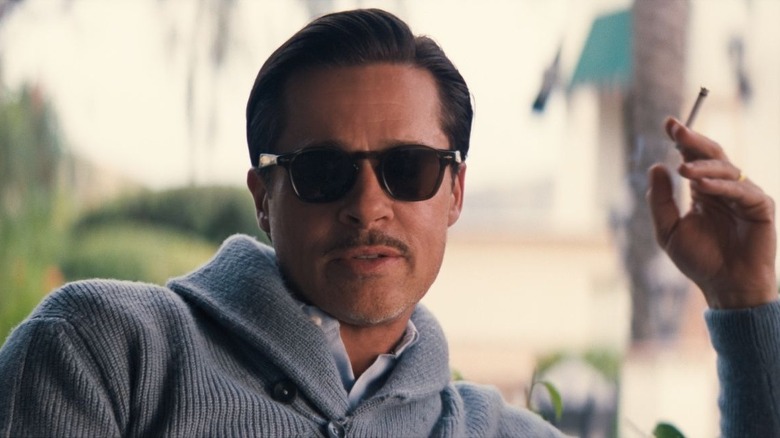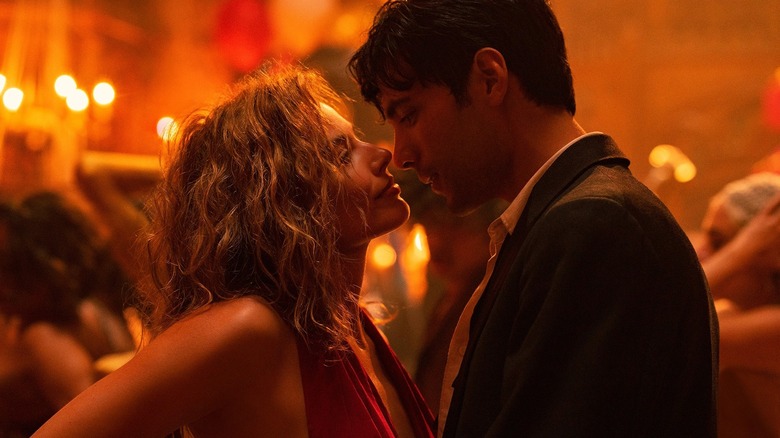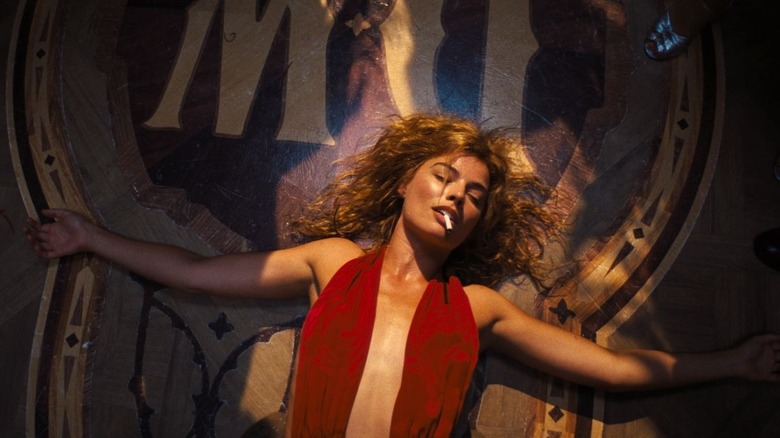Babylon Director Damien Chazelle Says The Film's Big Montage Is About The 'Life Cycle Of Cinema' [Exclusive]
This post contains major spoilers for "Babylon."
Is Damien Chazelle's newest film a love letter to cinema or an ode to a dying medium?
Complete with a staggering three hour runtime, "Babylon" is a bonafide epic of debauchery and bodily fluids (that's right!) that is sure to cause some debate when it opens in theaters this weekend. Like Chazelle's previous movies ("Whiplash," "La La Land,"), "Babylon" initially starts with an ensemble cast of dreamers with high ambitions making their way into the industry, but instead of an optimistic Hollywood tale, it quickly nosedives into something darker and unexpected.
There's a little bit of everything in "Babylon," taking cues from Paul Thomas Anderson's "Boogie Nights," a perversion of "Singin' in the Rain," and the ironic excess we've typically associated with Martin Scorsese's best. Despite the clear influences, one thing that remains characteristically "Chazelle" is his commitment to making a true spectacle out of his finales.
/Film's Ben Pearson spoke with Damien Chazelle about "Babylon" and its showstopper of an ending, which Chazelle described as "a sequence about evolution," and the "life cycle of cinema."
The death of the silent film era
If you've seen a few trailers and found that it was difficult to place the 1920s setting of "Babylon" from the costumes and production design before going into the movie, your instincts were correct for thinking so. The surprising amount of modernism in this period piece has its purpose.
Chazelle is explicitly drawing a parallel between the death of the silent film era to our modern day Hollywood. Stars like Jack Conrad (Brad Pitt) and Nellie LaRoy (Margot Robbie) are struggling to evolve with the invention of Talkies. Musicals are taking the industry by storm, and it's not enough to rely on good looks anymore. In this new era of Hollywood, you must reinvent yourself and follow trends — or it's out with the old, and in with the new.
By the end of "Babylon," we've seen our protagonist, Manny Torres (Diego Calva), go from animal wrangler to hotshot producer to humble father throughout the film's runtime. After running away from show business for good, he revisits the lot he used to work in and decides to watch a movie. While Manny has a transcendent experience watching "Singin' in the Rain," a glamorized version of his and his colleague's collapse of their Hollywood dream, the film shifts into a non-diegetic montage of notable pieces of cinema throughout the different eras of the industry.
'Cinema is always dying'
Obviously, after watching a sequence that celebrates the entirety of the artform's life cycle, one thing on our minds was how Chazelle came to choose which specific films and images to include. "A lot of it was very instinctive at first. It was just trying to imagine, 'What would the ideal shape of the scene be?' and not think at all about what could actually be clearable or this or that" Chazelle admitted.
After 3 hours of Chazelle showing us the unsavory side of the entertainment industry — glitz and glamor rooted in exploitation and corruption, he contrasts the ugly with the beautiful. It's a reminder that Hollywood might be rotten to the core, but the art it creates is meaningful and important. This ideological paradox is the core of "Babylon":
"For me, it was a sequence about evolution, about this life cycle of cinema, about the death and rebirth of cinema and about the idea that cinema is always dying and always somehow surviving. So that was the logical underpinning that unites every clip in there and dictates the structure of it to a certain extent. But beyond that, I did try to not overthink it too much, a lot of it did feel like ... I don't know, I've never experienced what action painting might feel like, but it felt like the editing equivalent of that."
A love letter to cinema, or a funeral song?
With the exception of "First Man," all of Chazelle's feature films so far are in some way influenced by music — particularly jazz. The rhythm of "Whiplash" is sporadic and increasingly linked to the beat of J.K. Simmons' tempo. The structure of "La La Land" is divided into verses and culminates into a harmonious finale. "Babylon," however, goes for broke and never lets up for 3 long acts, and its final moments are unpredictable and chaotic. If the entire artform of cinema collapses, it might sound just like "Babylon's" explosive finale.
The sequence will not end up working for everyone, and the inclusions of which films Chazelle considers "canonical" are destined to spark heated debate in itself (the flashes of "Tron" and "Avatar" especially feel surreal). However, we love to see a filmmaker, especially one often criticized for superfluous homage, take huge swings and come at it with true feeling.
Whether or not cinema will find its way again, "Babylon" shows Chazelle is dead set on keeping it alive.



